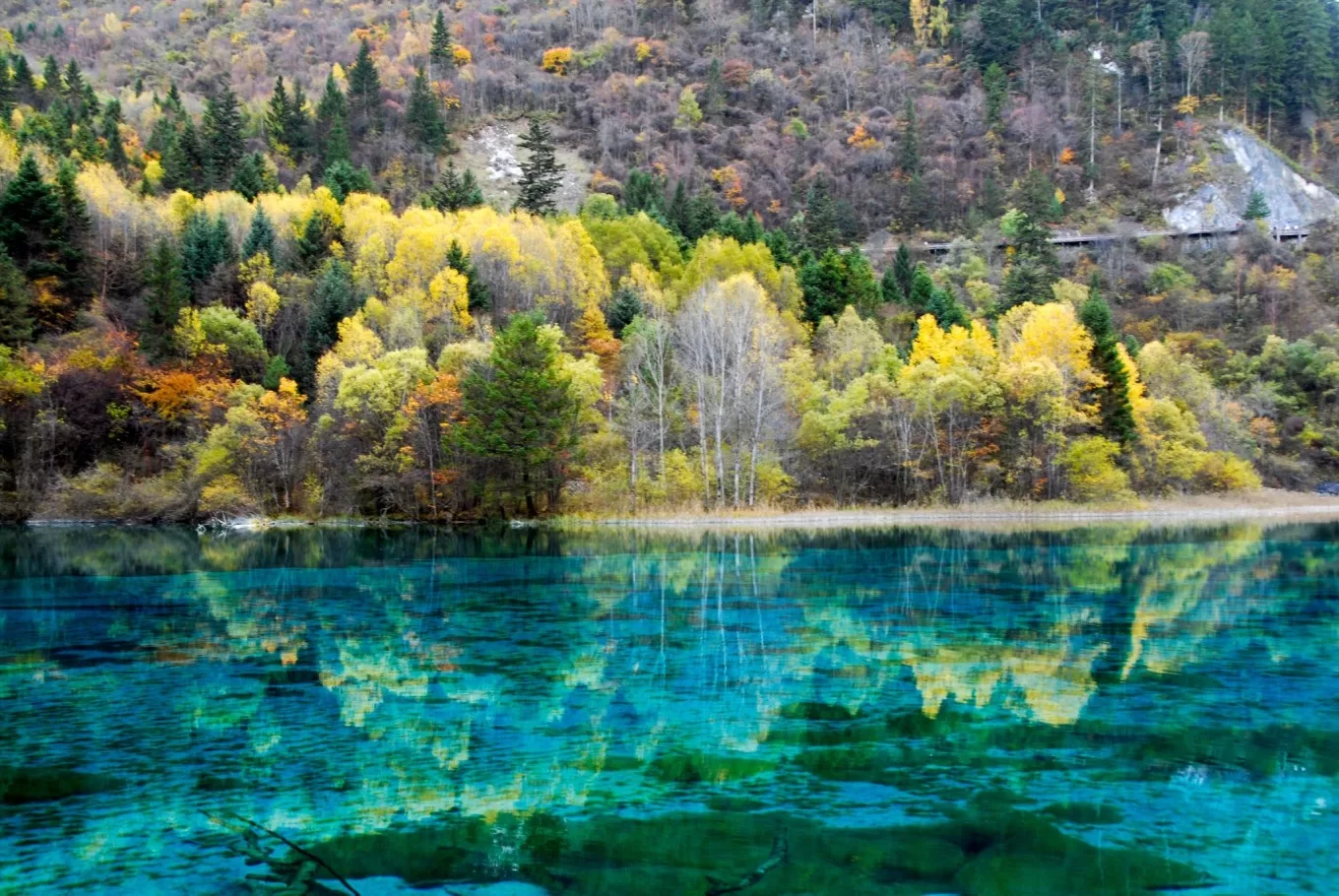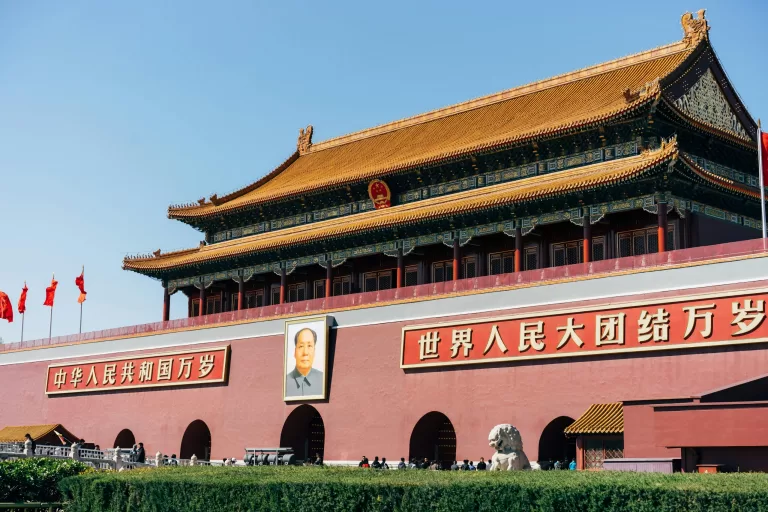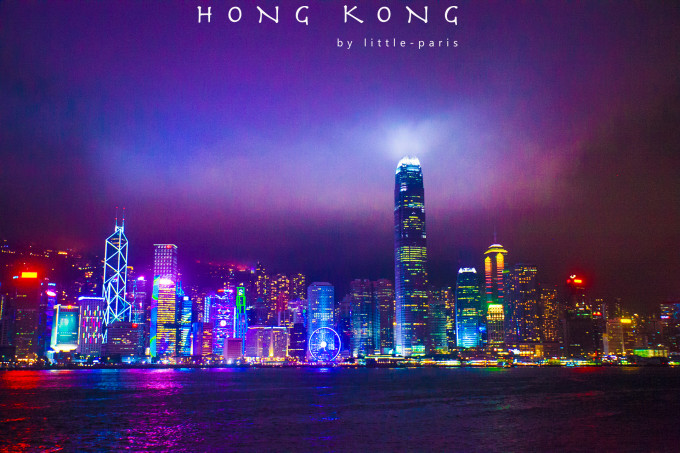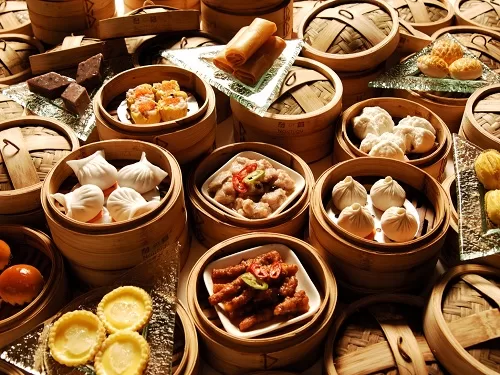Jiuzhaigou Local Travel Guide – the fairyland on earth
- I. Introduction
- II. Destination Overview
- III. Travel Preparation
- IV. Getting There
- V. Exploring the Scenic Spots
- VI. Local Cuisine
- VII. Shopping and Souvenirs
- VIII. Practical Information
- IX. Conclusion
I. Introduction
Welcome to the fairyland on earth – Jiuzhaigou! Nestled in the Aba Tibetan and Qiang Autonomous Prefecture of Sichuan Province, China, Jiuzhaigou is a world-renowned tourist destination that has captivated the hearts of travelers from all corners of the globe. With its surreal landscapes, crystal-clear lakes, majestic waterfalls, and lush forests, it’s truly a place where nature’s artistry knows no bounds. In this comprehensive travel guide, we’ll equip you with all the essential information you need to make your visit to Jiuzhaigou an unforgettable adventure.
II. Destination Overview
A. Location and Geography
Jiuzhaigou is nestled in the Aba Tibetan and Qiang Autonomous Prefecture in the northwest of Sichuan Province, China. It lies in the southern section of the Minshan Mountains, specifically in Zhangzha Town, Jiuzhaigou County. Approximately 400 kilometers away from Chengdu, the provincial capital, it is a significant tributary valley of the upper reaches of the Jialing River, which belongs to the Yangtze River system.
This area showcases a remarkable geographical diversity. The terrain is characterized by high-altitude valleys, with the elevation at the northern entrance of Jiuzhaigou being around 2,000 meters, while the central peaks soar above 4,000 meters, and the southern part reaches even higher, exceeding 4,500 meters. The main valley stretches over 30 kilometers. The unique combination of mountains, valleys, and lakes creates a mesmerizing landscape that seems almost otherworldly.
B. Cultural and Ethnic Characteristics
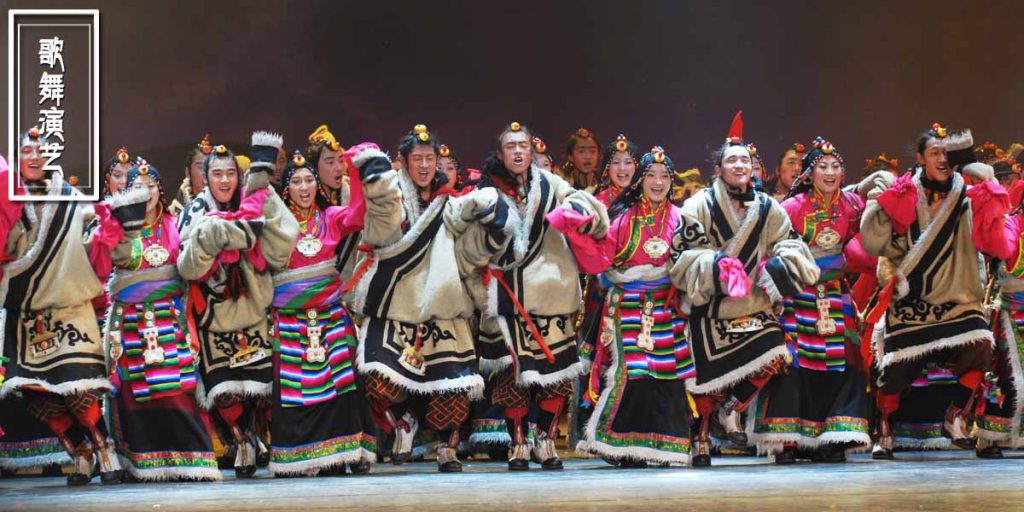
- Tibetan Villages
Within the scenic area, there are nine Tibetan villages, namely Shuzheng Village, Heye Village, Zechawa Village, and others. These villages, with their unique architecture and layout, blend harmoniously with the surrounding natural environment. The traditional Tibetan houses are mostly made of wood, typically two or three stories high. The ground floor is often used to house livestock or store supplies, the second floor serves as living quarters for the family and a place to worship deities, and the third floor is reserved for storing grains and agricultural tools. The exteriors of the houses are painted with vibrant colors and decorated with intricate patterns, reflecting the unique artistic charm of the Tibetan people.
The villagers lead a simple yet fulfilling life. They engage in traditional activities such as farming, herding, and handicraft making. You can often witness them wearing traditional Tibetan clothing, with men donning long robes and women dressed in colorful dresses and elaborate headdresses. Their warm smiles and friendly greetings will make you feel welcome and at home.
2. Religious Beliefs and Customs
The local people predominantly follow Tibetan Buddhism and 苯教。苯教,an ancient primitive religion, has a profound influence in this region. One can observe numerous religious practices and customs that have been passed down through generations.
“转经” is a common religious activity. Devout believers can be seen circumambulating sacred sites such as monasteries, stupas, or mani piles while turning hand-held prayer wheels. The larger prayer wheels, fixed along the monastery corridors, are also spun by the faithful as they pass by, believing that each rotation is equivalent to chanting the scriptures hundreds of times, thus accumulating merit.
“嘛尼堆”, piles of stones engraved with scriptures or sacred symbols, are scattered throughout the area, especially at crossroads, lake shores, and village entrances. These piles are considered sacred and are often adorned with colorful prayer flags that flutter in the wind, carrying the prayers and blessings of the people.
“龙达”, small pieces of paper or cloth printed with religious patterns and mantras, are used in religious ceremonies. They are either scattered in the air to seek blessings from the gods or strung together and hung in sacred places. It is believed that these acts can bring good fortune and ward off evil spirits.
These religious beliefs and customs are deeply ingrained in the daily lives of the local people, adding a spiritual and mysterious dimension to the already enchanting Jiuzhaigou.
III. Travel Preparation
A. Visa and Documents
Before embarking on your journey to Jiuzhaigou, ensure that you have a valid passport and the appropriate Chinese tourist visa. It’s advisable to check the latest visa requirements well in advance and apply through the nearest Chinese embassy or consulate in your home country. Keep your passport and other travel documents, such as flight tickets and hotel reservations, in a safe and easily accessible place. Make photocopies or digital scans of these important papers and store them separately. This precaution will prove invaluable in case of loss or theft.
B. Altitude Sickness Prevention
Jiuzhaigou is situated at a relatively high altitude, ranging from 2,000 to over 3,000 meters above sea level. Altitude sickness can affect some individuals, so it’s essential to take preventive measures. A few days before your trip, start taking medications like Rhodiola rosea, which may help alleviate symptoms. Once you arrive, avoid strenuous physical activities immediately and give your body time to acclimate. Drink plenty of water to stay hydrated, as dehydration can exacerbate altitude sickness. If you experience symptoms such as headache, dizziness, shortness of breath, or nausea, seek medical attention promptly.
C. Packing Essentials
Packing appropriately is key to a comfortable journey. Given the significant temperature difference between day and night in Jiuzhaigou, bring warm clothing such as down jackets, sweaters, and long johns, even during the warmer months. Don’t forget a wide-brimmed hat, sunglasses, and sunscreen with a high SPF to protect yourself from the strong ultraviolet rays. Comfortable walking shoes are a must, as you’ll be doing a fair amount of exploring on foot. Additionally, consider packing a portable oxygen cylinder, which can provide relief if you experience mild altitude sickness symptoms. Other essentials include a camera to capture the stunning landscapes, a power bank to keep your devices charged, and some basic medications for headaches, stomachaches, and colds.
IV. Getting There
A. By Air
The nearest airport to Jiuzhaigou is the Jiuzhai Huanglong Airport (JZH). Located in Chuanzhusi Town, Songpan County, Aba Prefecture, it is approximately 88 kilometers away from the entrance of Jiuzhaigou Valley. This airport serves as a crucial air hub, connecting Jiuzhaigou to major cities across China.
Direct flights are available from cities like Beijing, Shanghai, Chengdu, Chongqing, and Xi’an. Flight schedules vary seasonally, so it’s advisable to check with airlines or online travel platforms for the most up-to-date information.
Upon arrival at the airport, you can take a shuttle bus, which offers a convenient and economical way to reach the scenic area. Taxis are also readily available for a more direct and private transfer.
B. By Land
1. Long-Distance Buses
Traveling by long-distance bus provides an opportunity to enjoy the beautiful scenery along the way. Chengdu, the capital city of Sichuan Province, serves as a major transit hub.
From Chengdu, there are two main bus routes to Jiuzhaigou. The Western Route travels through Dujiangyan, Wenchuan, Maoxian, and Songpan, covering a distance of about 440 kilometers. The Eastern Route passes by Mianyang, Jiangyou, Pingwu, and Jiuzhaigou County, stretching approximately 480 kilometers.
Buses depart from Chengdu’s several long-distance bus stations, such as the New South Gate Bus Station and the Chadianzi Bus Station. Ticket prices range from 80 to 150 yuan, depending on the type of bus and seat. The journey takes around 8 to 10 hours, so it’s a good idea to bring some snacks and water.
2. Self-Driving
For those who prefer the freedom of the open road, self-driving can be an exciting option. There are several recommended driving routes:
- Route 1: Chengdu – Dujiangyan – Wenchuan – Maoxian – Songpan – Jiuzhaigou
- Route 2: Chengdu – Mianyang – Jiangyou – Pingwu – Jiuzhaigou County – Jiuzhaigou
- Route 3: Chengdu – Ya’an – Luding – Danba – Siguniang Mountain – Maerkang – Hongyuan – Chuanzhusi – Jiuzhaigou
It’s important to note that the roads in this area can be challenging, especially in mountainous regions. Make sure your vehicle is in good condition and equipped with necessary safety features. In winter, it’s essential to carry anti-skid chains due to possible snow and ice on the roads.
V. Exploring the Scenic Spots
A. Shuzheng Valley
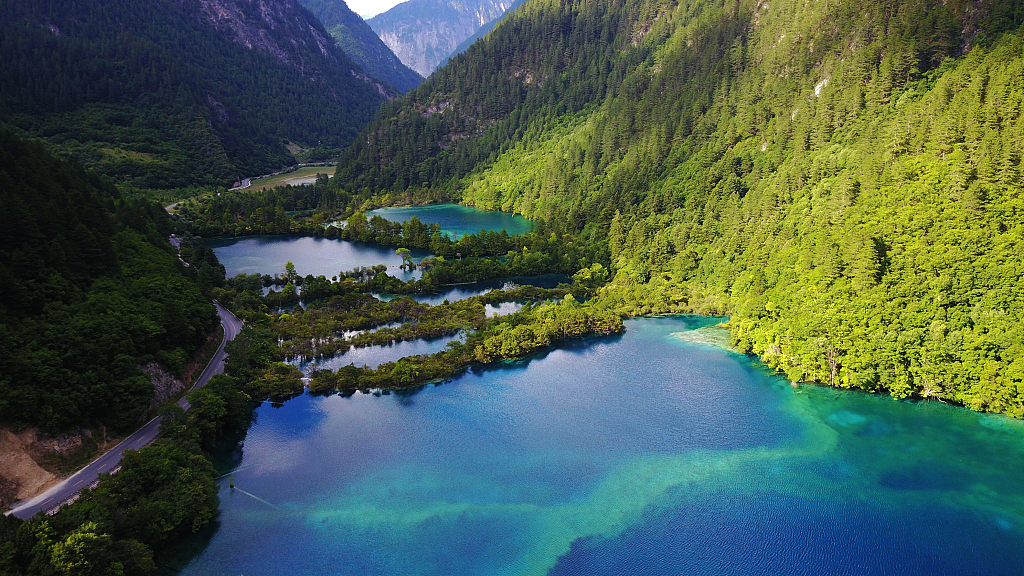
- Reed Lake
As you enter Jiuzhaigou through the Shuzheng Valley, the first wonder that greets you is the Reed Lake. This idyllic body of water is a haven of natural beauty. The lake is fringed with thickets of reeds that sway gently in the breeze, creating a soothing rustling sound. During spring and summer, the reeds are a vibrant green, providing a lush backdrop against the clear, emerald waters. In autumn, they turn a golden hue, adding a touch of warmth and charm to the already enchanting landscape. The shallow waters of the lake are home to a variety of fish and waterbirds, making it a paradise for nature lovers and photographers alike.
- Shuzheng Waterfalls
Just a short distance from Reed Lake, you’ll encounter the Shuzheng Waterfalls. This series of cascades is a sight to behold. The main waterfall, with a width of about 62 meters and a height of 15 meters, tumbles down over rocky outcrops, sending sprays of water into the air. The surrounding trees and foliage, doused in the mist, seem to come alive with a fresh, glistening sheen. The sound of the rushing water is both invigorating and calming, filling the air with a symphony of nature. As you stand on the viewing platforms, you can feel the cool mist on your face and marvel at the power and grace of the falls.
- Shuzheng Village
Nestled in the heart of the valley, Shuzheng Village offers a unique opportunity to immerse yourself in Tibetan culture. The village is dotted with traditional Tibetan-style buildings, their wooden facades painted in bright colors and adorned with intricate patterns. Here, you can visit local homes and interact with the friendly villagers, who are always happy to share their stories and traditions. You can also explore the local handicraft shops, where you’ll find hand-woven textiles, ornate jewelry, and other unique souvenirs. Don’t forget to try some of the local delicacies, like yak butter tea and barley wine, which are an essential part of Tibetan hospitality.
B. Rize Valley
- Nuorilang Waterfalls
Often regarded as the crown jewel of Jiuzhaigou, the Nuorilang Waterfalls is a must-see attraction. With a width that stretches over 300 meters and a height of 20 meters, it is one of the widest waterfalls in China. As the water thunders down from the cliff, it creates a magnificent display of power and beauty. The name “Nuorilang” means “magnificent and tall” in Tibetan, and it truly lives up to its name. In the summer months, when the sun is high, the mist from the falls forms a series of dazzling rainbows that arch across the sky, adding a touch of magic to the scene. Standing at the base of the falls, you’ll be dwarfed by its sheer size and overwhelmed by the roar of the water.
- Pearl Beach Waterfall
A short distance from Nuorilang Waterfalls lies the Pearl Beach Waterfall, another highlight of Rize Valley. This waterfall is renowned for its unique appearance. The water cascades over a gently sloping rock face, creating a wide, foamy curtain that resembles a sheet of pearls tumbling down. The sunlight reflecting off the water gives it a shimmering, almost ethereal quality. The best way to appreciate its beauty is to stand on the wooden viewing platforms that run along the side of the falls. From here, you can watch the water rush by and feel the spray on your skin. In the autumn, when the surrounding foliage turns vibrant shades of red and gold, the contrast against the white water is truly breathtaking.
- Five-Color Lake
Considered the essence of Jiuzhaigou, the Five-Color Lake is a natural wonder that defies description. The lake gets its name from the ever-changing colors that dance across its surface. Depending on the angle of the sunlight, the time of day, and the season, the water can appear in a kaleidoscope of hues, ranging from deep blues and greens to vibrant yellows and oranges. The bottom of the lake is littered with fallen tree branches and ancient tree trunks, which have been preserved by the mineral-rich waters. These add a touch of mystery and intrigue to the already captivating scene. As you walk around the lake on the wooden boardwalk, you’ll be constantly amazed by the new colors and reflections that greet you at every turn. It’s truly a place where nature’s artistry is on full display.
C. Zechawa Valley
- Changhai Lake
Located at the end of Zechawa Valley, Changhai Lake is the largest and deepest lake in Jiuzhaigou. Its calm, mirror-like surface stretches as far as the eye can see, reflecting the surrounding snow-capped mountains and blue sky with astonishing clarity. In the spring and summer, the lake is a deep blue, bordered by lush green forests. As autumn arrives, the surrounding foliage turns into a riot of colors, creating a picture-perfect scene. In winter, the lake freezes over, transforming into a vast ice-skating rink. The unique geographical features of the lake mean that it never overflows or dries up, adding to its mystique. There is a lone, ancient pine tree on the lakeshore, known as the “One-Armed Old Man Pine,” which has become an iconic symbol of the lake.
- Five-Color Pond
Tucked away in a secluded corner of Zechawa Valley, the Five-Color Pond is a small but dazzling body of water. Despite its size, it packs a punch when it comes to visual impact. The pond is filled with crystal-clear water that shimmers with a myriad of colors, thanks to the unique combination of minerals and sunlight. The colors range from bright turquoise to deep violet, creating a vivid and almost surreal display. Surrounded by rugged mountains and dense forests, the pond seems like a hidden gem, waiting to be discovered. It’s a place where you can sit in quiet contemplation and soak up the beauty of nature, away from the hustle and bustle of the more popular attractions.
VI. Local Cuisine
A. Tibetan Specialties
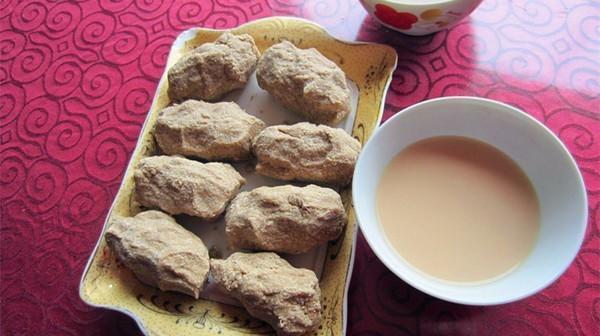
- Tsampa
Tsampa, a staple in the Tibetan diet, is made from roasted highland barley flour. It’s a versatile and convenient food that has been sustaining the Tibetan people for centuries. The process of making tsampa is quite simple yet time-honored. First, highland barley is carefully roasted until it emits a fragrant aroma, then ground into a fine powder. When it’s time to eat, a small amount of tsampa is scooped into a bowl, and a dollop of butter tea is added. Using the fingers, the mixture is skillfully kneaded into a dough-like consistency. Some locals also like to sprinkle in a bit of sugar or add some dried yak cheese for an extra burst of flavor. Tsampa is not only a delicious treat but also a great source of energy, perfect for fueling up before a day of exploring Jiuzhaigou’s vast landscapes.
- Butter Tea
Butter tea holds a special place in Tibetan culture and daily life. It’s a rich and creamy beverage that provides much-needed warmth and nourishment in the cold, high-altitude environment. To make butter tea, tea leaves, usually of the brick tea variety, are boiled vigorously until a strong, dark brew is achieved. Then, generous amounts of butter, sourced from yak milk, are added, along with a pinch of salt. The mixture is then transferred to a traditional wooden churn or, in modern times, an electric blender, and vigorously agitated until the butter and tea are fully emulsified, resulting in a thick, velvety liquid. The taste of butter tea might be an acquired one for some, with its initial savory and slightly salty flavor giving way to a smooth, creamy finish. It’s often served in wooden bowls, and sipping on a hot cup of butter tea is a great way to start the day or take a break during your adventures.
- Yak Meat
Yak meat is a delicacy in Jiuzhaigou and a significant part of the local cuisine. Due to the yaks’ adaptation to the harsh high-altitude environment, their meat is lean, tender, and rich in flavor. There are various ways to enjoy yak meat. Roasted yak meat is a popular choice, with the meat marinated in a blend of local spices and then slow-roasted over an open fire until the outside is crispy and the inside juicy. Yak meat hot pot is another favorite, especially during the colder months. A simmering pot of flavorful broth, often made with yak bones and seasoned with a variety of herbs and spices, is placed at the center of the table. Thin slices of fresh yak meat, along with an assortment of vegetables like mushrooms, cabbage, and potatoes, are then added to the boiling broth and cooked to perfection. The communal aspect of sharing a hot pot meal adds to the enjoyment, making it a memorable dining experience.
B. Sichuan Cuisine with Local Flavors
Thanks to Jiuzhaigou’s location in Sichuan Province, the local food scene also features a delightful blend of Sichuan cuisine with unique local twists. The bold and spicy flavors that Sichuan cuisine is famous for are well-represented here. Dishes like spicy fish, where fresh fish from the local waters is cooked in a fiery chili sauce with an array of fragrant spices, will surely tantalize your taste buds. Stir-fried meat with peppers is another classic, with tender slices of pork or beef tossed with an abundance of colorful bell peppers, chilies, and garlic, creating a dish that is both visually appealing and explosively flavorful.
When it comes to dining out, there are several restaurants worth checking out. The Qingke Tibetan Restaurant, located opposite the Jiuzhaigou Spectacular Show, offers a cozy Tibetan atmosphere and a menu filled with mouthwatering local specialties. Their yak beef and mushroom soup is a must-try, with a rich broth made from yak bones and a generous helping of wild mushrooms sourced from the surrounding mountains. The Tibetan-style nine-grid tray is also a great option for those who want to sample a variety of snacks in one go.
For a taste of authentic Sichuan cuisine with a local touch, the Chongqing Renjia Sichuan Restaurant is a popular choice. Their 万州烤鱼 is cooked to perfection, with the fish crispy on the outside and tender on the inside, smothered in a spicy and fragrant sauce. The potato cakes here are also highly recommended, crispy on the outside and fluffy on the inside, making them the perfect accompaniment to any meal.
No matter which restaurant you choose, exploring the local cuisine is an essential part of the Jiuzhaigou experience. It’s a chance to tantalize your taste buds and gain a deeper understanding of the rich cultural heritage that permeates every aspect of life in this magical place.
VII. Shopping and Souvenirs
A. Local Handicrafts
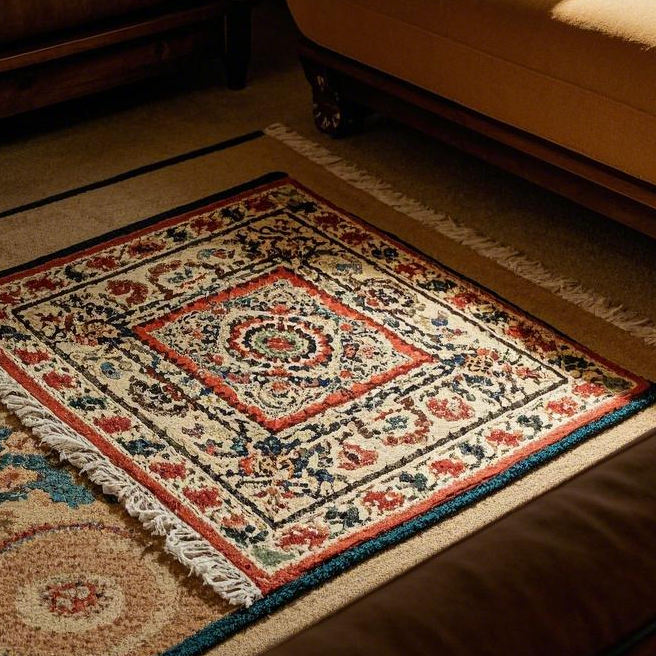
- Tibetan Carpets
Tibetan carpets are renowned for their exquisite craftsmanship and rich cultural connotations. Hand-woven by skilled artisans, these carpets feature intricate patterns and vibrant colors that often depict elements of Tibetan mythology, nature, and daily life. The designs can include sacred symbols like the “Eight Auspicious Symbols” of Buddhism, mythical creatures such as dragons and phoenixes, or scenes of yaks grazing on the plateau. The production process is a labor-intensive art, with each carpet taking months to complete. Fine wool is carefully selected and dyed using natural pigments to achieve the vivid hues. The weavers then meticulously knot each thread by hand, following age-old patterns passed down through generations. Owning a Tibetan carpet is not only a way to bring a piece of Jiuzhaigou’s culture home but also an investment in a unique and beautiful work of art.
- Silverware
Tibetan silverware holds a special place in the local culture. It ranges from delicate jewelry pieces like necklaces, bracelets, and earrings adorned with turquoise, coral, and other precious stones, to functional items such as silver bowls, teapots, and butter lamps. The craftsmanship is remarkable, with silver being intricately engraved or embossed with traditional motifs. These motifs often have religious significance, such as mantras, lotus flowers, or the Wheel of Dharma. Silverware is not only used in daily life but also plays an important role in religious ceremonies. For example, silver bowls are used to offer food and drink to the gods, and butter lamps made of silver are lit to symbolize the pursuit of enlightenment. When purchasing silverware, it’s important to ensure its authenticity and quality. Look for hallmarks or seek advice from local experts to distinguish genuine pieces from imitations.
- Thangka Paintings
Thangka paintings are a visual representation of Tibetan Buddhism and a significant art form. These scroll paintings are meticulously created on canvas or silk using natural pigments. The themes revolve around Buddhist deities, mandalas, and stories from religious scriptures. Each stroke of the brush is filled with spiritual meaning, and the artists often undergo years of training to master the techniques. The colors used in Thangka paintings are symbolic; for instance, blue represents wisdom, white symbolizes purity, and red denotes compassion. Thangkas can be found in various sizes, from small ones that can be carried as amulets to large, elaborate pieces that adorn monastery walls. Owning a Thangka painting is like having a window into the spiritual world of Tibet. It can serve as a focal point for meditation or a beautiful decoration that adds a touch of serenity to any space.
B. Special Local Products
- Jiuzhaigou Honey
Jiuzhaigou honey is a natural delicacy that captures the essence of the region’s flora. The honey is produced by bees that forage on the diverse wildflowers and plants that blanket the area. It has a distinct, rich flavor that is both sweet and slightly floral. Rich in nutrients like vitamins, minerals, and antioxidants, it’s not only a delicious treat but also offers potential health benefits. You can find jars of this pure honey in local markets and specialty stores. It makes for a great souvenir or a gift for friends and family back home. Some honey products may even come with added ingredients like propolis or royal jelly for an extra boost of nutrition.
- Chinese Caterpillar Fungus
Also known as Cordyceps sinensis, this precious fungus is a sought-after medicinal and tonic ingredient in traditional Chinese medicine. It is found in the high-altitude meadows and grasslands around Jiuzhaigou. The fungus has a unique appearance, resembling a small, wiry plant with a caterpillar-like body. It is believed to have various health-enhancing properties, such as boosting the immune system, improving lung function, and increasing energy levels. Due to its rarity and high demand, it comes with a hefty price tag. When purchasing Chinese caterpillar fungus, make sure to buy from reliable sources to ensure its authenticity and quality. It is often sold in dried form and can be used to make medicinal soups or tinctures.
- Dried Fruits
The local climate and fertile soil in Jiuzhaigou produce an abundance of delicious fruits, which are often dried to preserve their flavor and nutritional value. Dried apricots, peaches, and apples are popular choices. These dried fruits are sweet, chewy, and a convenient snack to carry while exploring the scenic spots. They are also a great source of vitamins and fiber. You can find them packaged in small bags or sold loose in local grocery stores and souvenir shops. Some vendors may even offer samples so you can taste the freshness and natural sweetness before making a purchase.
VIII. Practical Information
A. Accommodation
When it comes to accommodation in Jiuzhaigou, you’ll find a diverse range of options to suit every budget and preference.
For those seeking luxury and top-notch service, the Sheraton Jiuzhaigou Resort is an excellent choice. This five-star hotel is conveniently located near the entrance of the scenic area, offering easy access for guests. It features elegantly decorated rooms with modern amenities, including high-speed Wi-Fi, flat-screen TVs, and plush bedding. The hotel also houses multiple restaurants serving a variety of cuisines, a fitness center equipped with state-of-the-art equipment, and an indoor swimming pool where you can relax after a day of exploring.
If you’re looking for a more mid-range option with a touch of local charm, consider the Jiuzhaigou Ancient Town Theme Hotel. With its unique Tibetan architectural style, this hotel provides a cultural immersion experience. The rooms are tastefully furnished, often incorporating traditional Tibetan elements in the decor. Guests can enjoy evening entertainment such as bonfires and Tibetan song and dance performances, adding a memorable touch to their stay.
Budget-conscious travelers will find comfort at the Jiuzhaigou Gukou Inn. Situated close to the scenic area, it offers clean and basic rooms at an affordable price. The inn provides a friendly atmosphere and essential amenities like hot water, clean bedding, and free Wi-Fi. It’s a great choice for those who plan to spend most of their time outdoors exploring the wonders of Jiuzhaigou.
B. Tickets and Opening Hours
The ticket prices in Jiuzhaigou vary depending on the season. During the peak season, which runs from April 1st to November 15th, the combined ticket for admission and the sightseeing bus is 310 yuan per person. In the off-season, from November 16th to March 31st of the following year, the total cost is 290 yuan per person.
It’s important to note that there are also various preferential policies in place. For example, students with valid identification cards (including middle school, technical school, and vocational school students) can enjoy half-price tickets. Seniors aged 60 to 69 can get half-price tickets with their ID cards, while those aged 70 and above are eligible for free admission. Disabled individuals and their accompanying persons (limited to one) are also exempt from the ticket fee.
The opening hours of the scenic area are generally from 7:30 am to 6:00 pm. However, it’s advisable to check the official website or local announcements for any potential changes, especially during holidays or special events.
C. Transportation within the Scenic Area
The scenic area of Jiuzhaigou provides a convenient shuttle bus system to help visitors get around. The buses operate along fixed routes, stopping at all major attractions. This allows you to hop on and off at your leisure, exploring the different areas of the park.
The fare for the shuttle bus is included in the overall ticket price, so there’s no need to worry about additional costs. The buses run at regular intervals, usually every 10 to 15 minutes, ensuring that you won’t have to wait long to continue your journey.
Some key routes include the line from the entrance to the Nuorilang Visitor Center, which serves as a major transfer hub. From here, you can catch buses to other popular destinations like the Long Lake in Zechawa Valley or the Five-Color Lake in Rize Valley.
The shuttle buses are not only a convenient way to travel but also provide an opportunity to relax and take in the surrounding scenery as you move from one attraction to another. It’s a great way to make the most of your time in Jiuzhaigou and ensure you don’t miss any of the highlights.
IX. Conclusion
Jiuzhaigou is truly a destination that transcends expectations, offering a harmonious blend of natural wonders and rich cultural heritage. From the moment you set foot in this magical place, you’ll be enchanted by the crystal-clear lakes that seem to hold the secrets of the earth, the majestic waterfalls that thunder with the power of nature, and the lush forests that teem with life.
The local Tibetan and Qiang communities add a unique charm, with their warm hospitality, time-honored traditions, and exquisite handicrafts. Whether you’re seeking a spiritual retreat, an adventure in the great outdoors, or a cultural immersion, Jiuzhaigou has something to offer everyone.
As you explore this paradise, remember to tread lightly and respect the environment and local customs. Let the beauty of Jiuzhaigou seep into your soul and create memories that will last a lifetime. We hope this travel guide has equipped you with the knowledge and inspiration to embark on your own unforgettable journey to Jiuzhaigou. Pack your bags, embrace the unknown, and get ready to discover the wonders that await you in this fairytale land.

